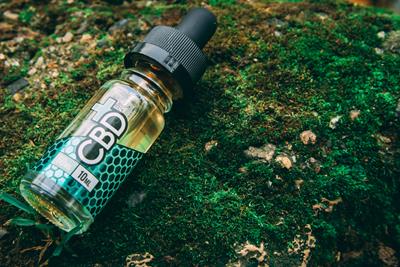
Monday March 18, 2019
Updated on 11/13/2019
 420 Culture
420 Culture
Every day, new people are exploring the benefits of CBD, and the market has noticed. CBD is taking the health and leisure market by storm, garnering the attention of athletes, celebrities, major corporations and most importantly, consumers. Last year, the 2018 Farm Bill brought sweeping reform to continue the trend for CBD acceptance in the U.S., resulting in record hemp harvests in places where the plant had been previously banned, and creating an ample supply of source material for the booming industry. A dazzling list of new products and formulations, from CBD for cats to CBD-infused water and chewing gum can be found for sale online. A slowly emerging federal acceptance means that new opportunities may await future iterations of CBD delivery. Understandably, competition is fierce within this flourishing landscape, as a glut of companies rush to sell essentially similar products. So, how do CBD companies stand out from one another in the midst of a competitive industry?
Where Did All This CBD Come From?
Multiple factors have coincided to make this unique moment in cannabis history. The Agricultural Act of 2014, colloquially known as the “2014 US Farm Bill” removed certain restrictions on growing industrial hemp and set the stage for expanded CBD availability. The bill expanded access to CBD for research purposes as well. Coinciding with this regulatory change, adult-use legalized states such as Colorado, Washington and Oregon introduced a new set of consumers to the benefits of therapeutic cannabinoids and expanded public knowledge beyond THC. Stories of CBD-heavy strains being used to treat cases of extreme childhood epilepsy have become commonplace through exposure from reputable outlets like CNN.

Each election cycle, new states join the green wave in passing progressive cannabis reform. At time of this writing, over 30 states have established some form of legal cannabis access – a number that is likely to be outdated in short time. The expanded access to research that the 2014 Farm Bill provided resulted in the first FDA-approved CBD drug, Epidiolex being prescribed and sold across the healthcare market. Expect to see more CBD-based products receive FDA approval as research becomes more readily available.
Advancements in Legislation
The recent legislative advancements have created an unprecedented moment in the CBD industry. A newly educated base of consumers is encountering availability in a way previously impossible, making public demand for CBD products at an all-time high and rising. Even the big fish have started to take notice. Headlines were abuzz last week over lifestyle mogul Martha Stewart partnering with cannabis mega-producer Canopy Growth to enter the CBD market with a line of products.
Making a Name in 2019
Whether or not industry competition will be seen as a challenge or an opportunity for CBD companies will come down to differences in corporate strategy. Companies that find a way to take advantage of the rush will thrive, while those that fail to innovate are in danger of fading away amidst a sea of similar faces. One of the largest problems facing the industry today is a lack of intersectional understanding. Growers do not always understand the problems of producers or consumers, and vice versa. In order to fix these problems and offer superior CBD products, industry players will need to forge new bonds and connections – many of which are grown and nurtured through community involvement and cannabis events.
2018’s vast regulatory changes will make cannabis’ many constituents, including CBD, a prime topic of discussion at cannabis events this year and those looking to gain a leg up would do well to be part of the conversation. Understanding the needs and concerns of different players involved in the broader cannabis market will allows producers to expand their consumer bases, and forge more effective marketing and communication strategies.
Quality Over Everything
Leading CBD companies distinguish themselves by offering superior products, but what exactly sets a brand apart from the rest? Here are a few things to look for:
Reputable CBD Company Traits:
- Reliable information on sourcing, testing, growing techniques and pesticide use
- Clear, unbiased information on usage and potential health effects
- Accurate information on dosage and ingredients
International regulation on hemp cultivation can often be more lax than local standards, and regulation on importing hemp products is also permissive, making imported hemp a cheaper source of base material for many CBD product companies. Because of this, the resulting products made from imported hemp are typically of unreliable and unverifiable quality. In an effort to increase profits, some companies will go to great lengths to obfuscate the imported sourcing of their hemp. Smart consumers and CBD product producers would do best to be transparent about their sourcing and purity, and offer reliable testing and sourcing information.

Just as where a company chooses to save money can inform consumers, where a company chooses to spend money can be telling of their level of commitment as well. Companies that innovate and devote resources to research and development, such as novel delivery methods or more stable efficacy results, tend to have more to offer consumers than those that focus only on branding and marketing. While marketing can offer important strides in short-term exposure, it is unlikely to stand the test of time when larger players inevitably enter the market down the line.
The World of CBD to Come
It is difficult to forecast exactly where CBD will go from here, but all signs point up. The current wave of interest and commerce in CBD is likely to drive a spurt in investment and innovation in the sector. Numerous 2020 presidential candidates have set cannabis legalization as a primary topic of their platform. However, none have explicitly stated plans to change CBD’s classification in the eyes of the FDA. Still, CBD availability is only likely to increase its market share with coming regulatory changes and forward momentum. Canada’s recent federal legalization and Mexico's impending progressive drug reform sets the stage for an international cannabis and CBD market.
With larger acceptance will come larger players in the market, as we have already seen. In order to stay competitive, companies will have to focus on expertise and reliability and be able to effectively get their customers to trust and accept that expertise and reliability over others. Growing consumer demand means that there will be a space for bad actors to take advantage of customers looking to acquire CBD without fully understanding the multiple factors that determine its quality. As CBD companies build their corporate strategies to service the market, they will have to decide the cost of standing apart when fitting in could means short-term profits.
What do you think of the emerging CBD market in the United States? Share your thoughts in the comments below!
Photo Credit: Vaping360 (license)







